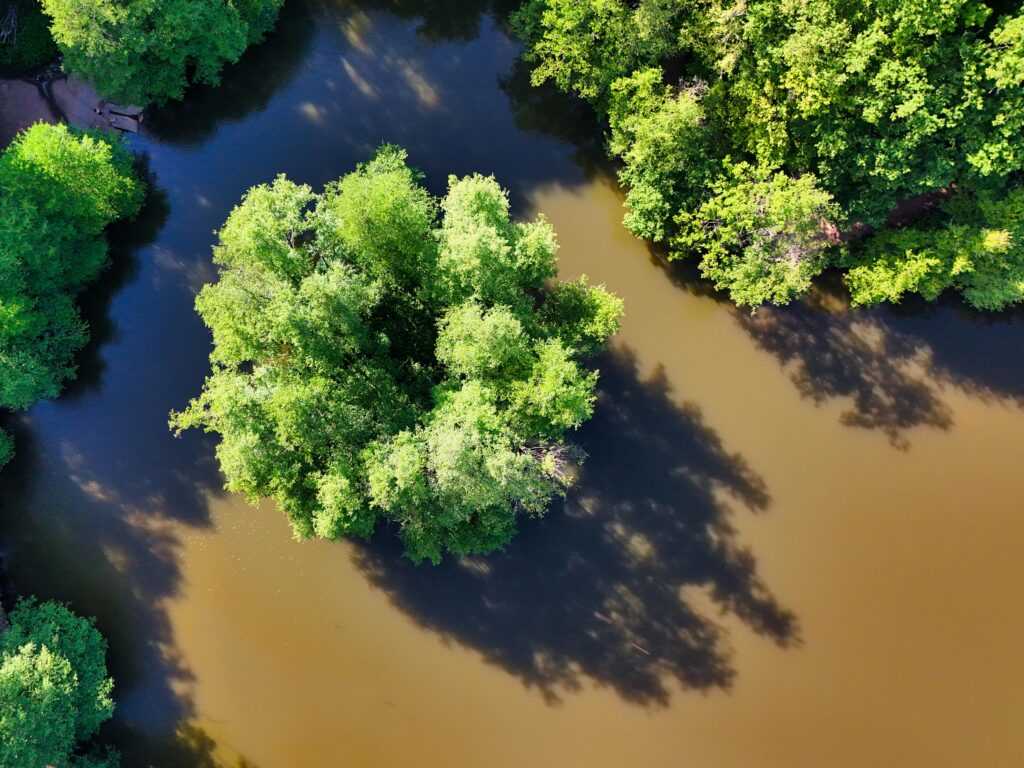The rehabilitation of polluted waterways stands to deliver transformative results across the world, from restoring aquatic biodiversity and improving public health to increasing property values and supporting climate resilience. In many cities and regional areas, revived rivers, streams, and estuaries also provide new spaces for recreation and community engagement. These benefits make quick, decisive action increasingly important.
However, tackling these complex challenges is not a task for the government alone. Waterway rehabilitation requires councils, businesses, non-profits, and community groups to actively work in concert. Without alignment and a coordinated approach, even the most well-meaning efforts can become fragmented or die off. Thus, strategic planning, collaboration, and the right technical solutions are essential for making improvements last and facilitating consistent forward progress.
Let’s look at several practical ways an organisation can contribute more effectively to local or regional waterway rehabilitation initiatives.
Strengthen Sediment and Pollution Control
It only takes a single storm to carry large volumes of sediment, oil, and chemical runoff from urban, industrial, or agricultural sites into nearby waterways. Left unchecked, these materials can cloud water, choke aquatic life, and disrupt natural flow patterns. They also make it harder for water systems to recover over time, which only compounds the damage.
Businesses that produce or handle wastewater, such as those in manufacturing, construction, or mining—are in a particularly strong position to act. Strategic investment in purpose-built equipment and infrastructure can significantly reduce the volume and impact of discharge. For instance, exploring the use of a lamella plate clarifier for sale by a reputable supplier may help reduce the amount of suspended solids reaching waterways. These compact systems are designed to accelerate sedimentation, and this makes them ideal for sites dealing with high flow volumes or limited space.
Even outside of industrial operations, organisations can support pollution control through smaller-scale interventions: installing permeable surfaces, maintaining vegetated buffer zones, or upgrading stormwater management systems. These measures improve compliance with environmental regulations and contribute meaningfully to the broader goal of waterway restoration.
Adopt Integrated Watershed Management
Natural water systems don’t respect administrative boundaries. Thus, trying to fix one section of a river without addressing upstream issues often leads to limited results. A more effective approach involves looking at the entire watershed as a single, interconnected system and managing it accordingly.
Integrated watershed management encourages collaboration between sectors and jurisdictions. Councils, landowners, developers, and conservation groups can align their efforts around shared outcomes such as erosion control, vegetation restoration, and water flow regulation. When decision-making reflects the full scope of a catchment area, it becomes easier to prioritise interventions that benefit the system as a whole rather than one specific stakeholder.
Private organisations participating in these broader planning efforts—whether through local water alliances, stakeholder forums, or regional environmental plans—can improve project relevance, access to funding, and community support. It also ensures that any one group’s rehabilitation activities are reinforcing what others are doing in the same system, not conflicting with them.
Partner with Indigenous and Local Communities
Efforts to rehabilitate waterways tend to fall short when they ignore the lived experience of the people who have long depended on them. Indigenous groups, in particular, often hold deep knowledge about a waterway’s natural rhythms, cultural significance, and past conditions. Bringing this insight into environmental planning and governance can lead to more grounded, respectful, and lasting outcomes.
Strong partnerships with indigenous custodians and local communities need to involve more than just token consultation. Co-designing rehabilitation initiatives and recognising traditional water rights can help restore not only the ecological health of a waterway but also its cultural integrity. In some cases, community-led monitoring and management programs have proven more effective than top-down enforcement models.
From a practical standpoint, partnering locally also opens up opportunities for shared stewardship. Residents often have firsthand knowledge of problem areas, undocumented pollution sources, or historical practices that shaped current conditions. Organisations that tap into that knowledge can save time, strengthen trust, and encourage broader buy-in, all of which are critical elements for the long-term success of any rehabilitation initiative.
Incorporate Nature-Based Solutions
High-tech systems are not always necessary to restore natural function. In many cases, the most effective interventions are those that work with, rather than against, ecological processes. These can range from replanting native vegetation along riverbanks to reconnecting wetlands, constructing rain gardens, or daylighting previously buried streams.
These nature-based solutions offer several advantages. They improve water quality by filtering runoff, reduce flood risk by absorbing excess flow, and provide habitats that support biodiversity. As climate change increases the intensity of rainfall and drought cycles, these systems also enhance resilience by making the landscape more adaptive and self-regulating.
Incorporating these solutions doesn’t mean abandoning built infrastructure, either. Rather, it’s about integrating green elements into existing or planned developments. For businesses and councils, this could involve adding bioswales to car parks, using green roofs to reduce runoff, or protecting riparian corridors during construction. These additions can transform degraded spaces over time into functioning ecosystems that support both environmental and community well-being.
Develop Reporting and Monitoring Systems
Without good data, it’s nearly impossible to know whether rehabilitation efforts are actually working. Water quality may improve in one area while degrading in another, or native species may return only to disappear again months later. Robust monitoring systems help capture these shifts, thereby facilitating timely interventions and adaptive management.
Clear indicators need to be established at the start of any project to provide a baseline for comparison. These might include turbidity levels, nutrient concentrations, or vegetation cover. Regular sampling and analysis help track progress, but so too does transparency. It’s also important for leading organisations to share results with community stakeholders, local authorities, and project partners to help build trust and accountability.
Digital platforms and community science can also play a valuable role. When volunteers help collect data or report changes, monitoring becomes more responsive and locally informed. This creates a feedback loop for organisations where insights gained from the field can shape future actions and increase the overall effectiveness of waterway rehabilitation initiatives.
Rehabilitating waterways is not only an environmental obligation but also an opportunity to shape healthier, more resilient communities. The more organisations step into their role as stewards, the more momentum these efforts gain. The ultimate goal is for restoration to become the norm, not the exception.

 Jasmine Wellish is a key contributor at Info Wave Circle, known for her insightful articles and creative approach to technology and societal issues. With a deep passion for innovation and a knack for storytelling, Jasmine plays a crucial role in communicating the vision and achievements of Info Wave Circle to a broader audience.
Since joining the team, Jasmine has been instrumental in crafting compelling content that highlights the transformative potential of technology. Her work not only informs but also inspires the Info Wave Circle community and beyond. Jasmine’s dedication to exploring new ideas and her ability to convey complex concepts in an engaging manner make her an invaluable asset to the organization’s mission of fostering innovation and societal progress.
Jasmine Wellish is a key contributor at Info Wave Circle, known for her insightful articles and creative approach to technology and societal issues. With a deep passion for innovation and a knack for storytelling, Jasmine plays a crucial role in communicating the vision and achievements of Info Wave Circle to a broader audience.
Since joining the team, Jasmine has been instrumental in crafting compelling content that highlights the transformative potential of technology. Her work not only informs but also inspires the Info Wave Circle community and beyond. Jasmine’s dedication to exploring new ideas and her ability to convey complex concepts in an engaging manner make her an invaluable asset to the organization’s mission of fostering innovation and societal progress.
